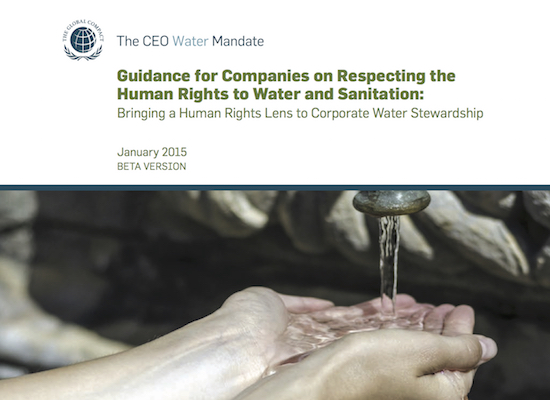Primary Functions
- Learn how companies can bring a human rights lens to existing or emerging water stewardship efforts.
Detailed Description
In 2010, the United Nations General Assembly and Human Rights Council formally recognized the human right to water and sanitation. In 2011, the UN Guiding Principles on Business and Human Rights (“Guiding Principles”) were unanimously endorsed by member states in the UN Human Rights Council. The Guiding Principles have clarified the global expectation that businesses everywhere should respect human rights throughout their operations. Together, these two developments have led to increased expectations that responsible companies will work to align their water management practices with their responsibility to respect human rights.
Companies in the UN Global Compact (UNGC) explicitly commit to respect and support human rights as part of their commitment to uphold the UNGC’s Ten Principles. The UN Guiding Principles reinforce the “respect” dimension of the UNGC’s human rights principles, providing companies with an authoritative framework on policies and processes that they should implement in order to meet their responsibility to respect human rights.
Following these developments at the global level, companies in the UNGC CEO Water Mandate recognized that business was in need of practical guidance about how to effectively align corporate water stewardship practice with the corporate responsibility to respect the human rights to water and sanitation (HRWS). This Guidance aims to meet that need, by helping companies bring a human rights lens — as defined in the UN Guiding Principles — to their existing or emerging water stewardship efforts. It also provides some pointers for companies that are committed to supporting human rights.
This Guidance aims to:
- Help companies (particularly heavy water users) translate their responsibility to respect the HRWS into their existing water management policies, processes, and company cultures
- Complement related efforts to clarify the obligations and responsibilities of other actors (particularly states and public or private water and sanitation service providers) with regard to the HRWS.





